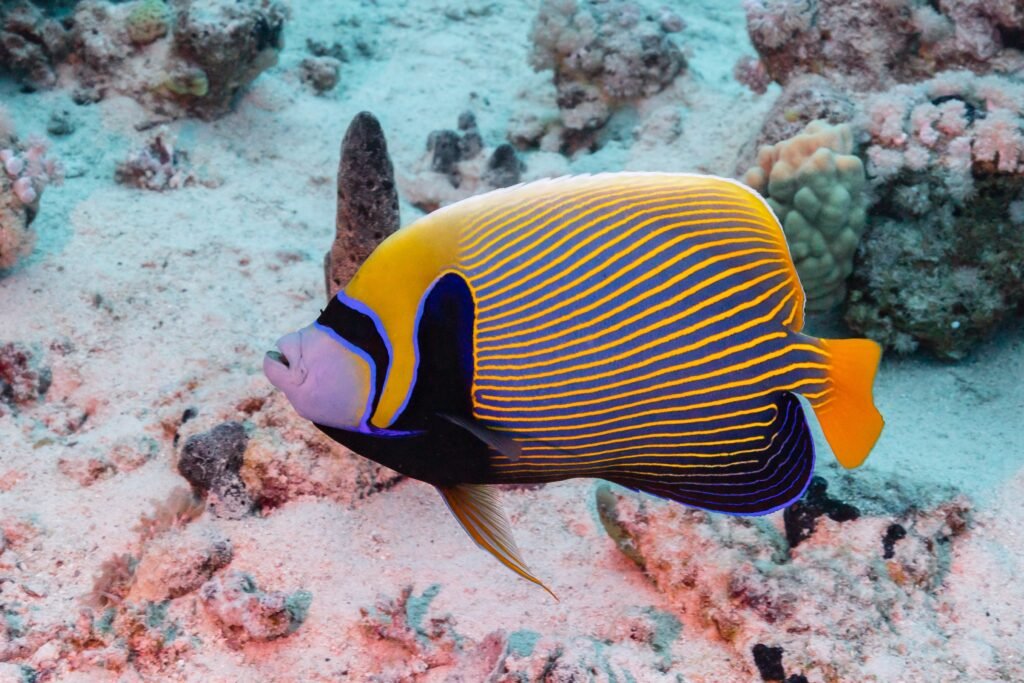Nature has painted our planet with creatures so vibrant they seem almost too spectacular to be real. From the deepest rainforests to the vastness of coral reefs, our world teems with animals that showcase every shade imaginable. These living masterpieces didn’t develop their stunning colors by accident. Each hue serves a purpose, whether attracting mates, warning predators, or blending into their surroundings.
You’re about to discover ten of the most breathtakingly colorful animals that call Earth home. These creatures will challenge everything you thought you knew about natural beauty. So let’s dive into this kaleidoscope of wildlife wonder.
The Mandrill – Nature’s Most Colorful Mammal
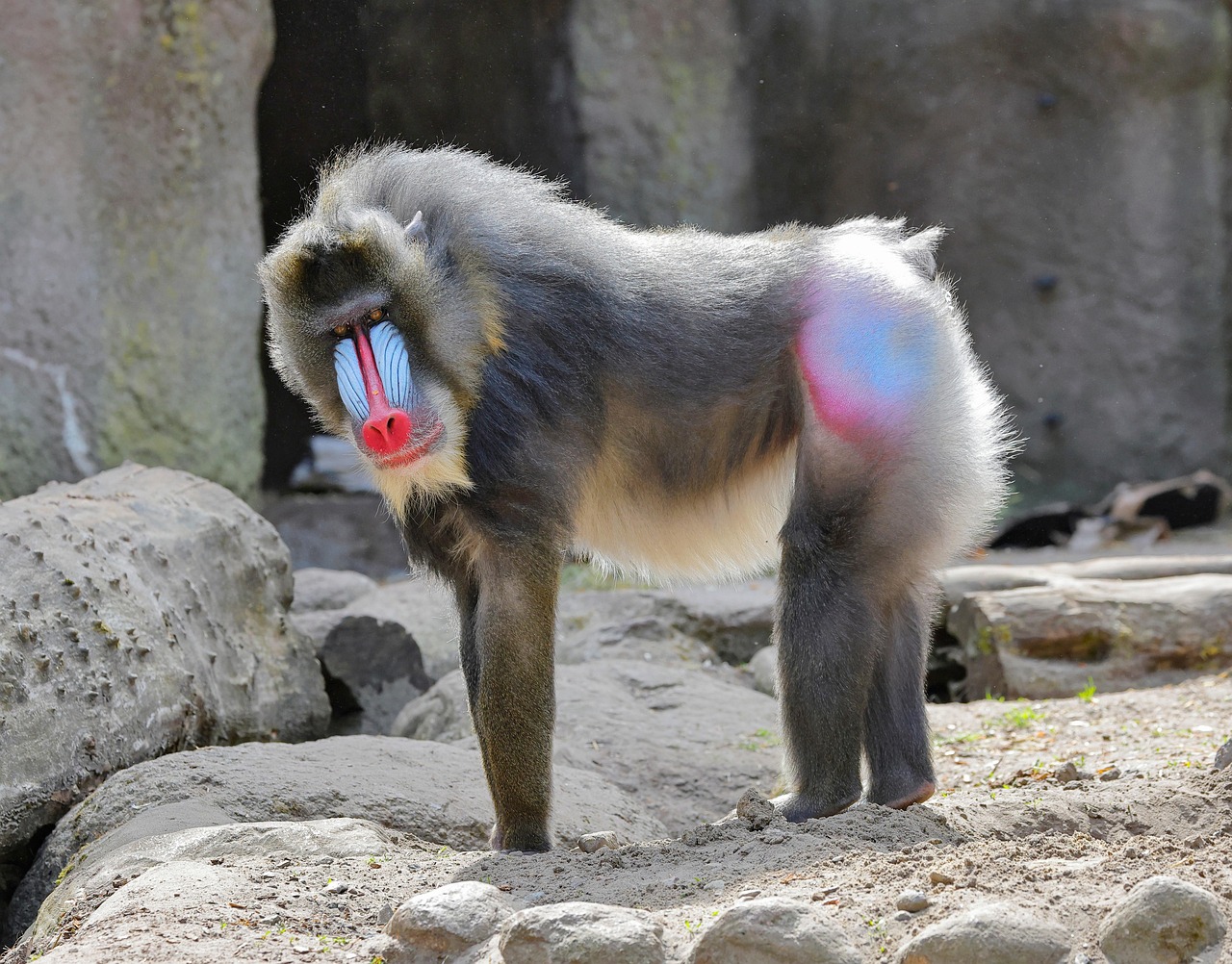
The mandrill stands as one of the most colorful mammals in the world, with scientists noting that no other member of the entire mammal class is colored as extraordinarily as the adult male mandrill. Males sport a brilliant red line running down the center of their faces connected to red noses, flanked by bright blue and grooved skin, while their rumps display a spectacular array of red, pink, blue, and purple.
The stunning coloration comes from two fascinating sources: the red comes from blood vessels near the skin’s surface, while the blue results from structural coloration caused by parallel arrangements of collagen fibers. Dominant males display the most vivid colors and achieve the greatest mating success, with their bright facial features and colorful rumps becoming even more pronounced upon gaining alpha status. When a male loses his dominance, these remarkable colors actually fade, showing how closely their appearance ties to their social standing.
Rainbow Lorikeet – Australia’s Flying Rainbow
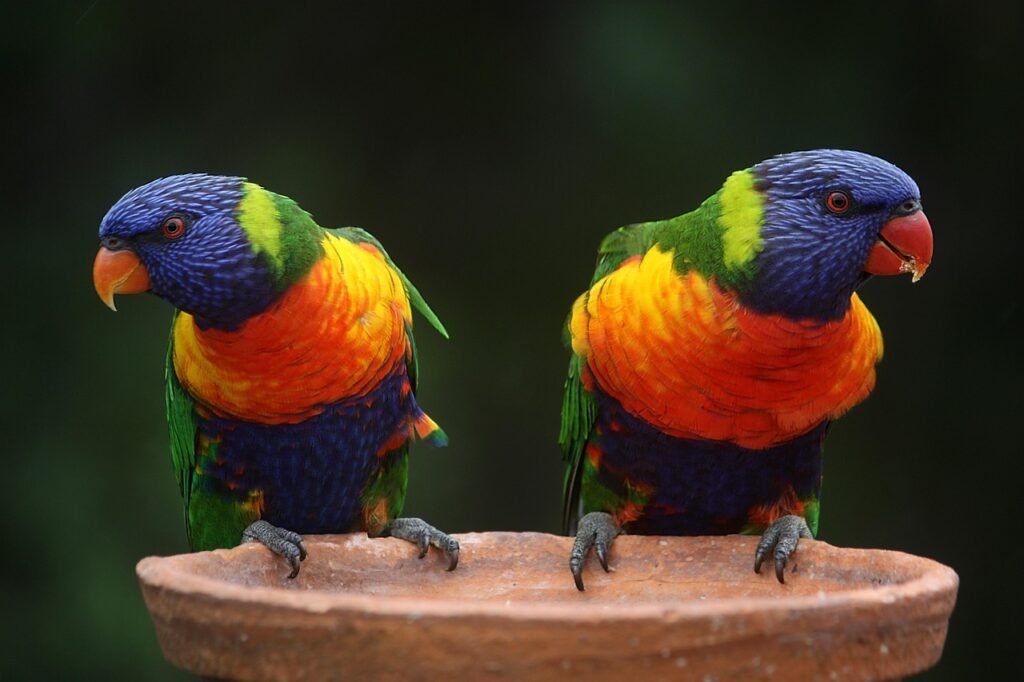
The rainbow lorikeet lives up to its name with an explosion of colors including a red bill, blue head and belly, green back and wings, and a dappled yellow-and-orange breast. These medium-sized Australian parrots are living explosions of red, green, blue, orange, and yellow, with feathers that seem to glow with an inner light.
Rainbow lorikeets feed primarily on nectar and pollen using specialized brush-tipped tongues, traveling in noisy, joyful flocks with their colors flashing like sparks against the blue sky. These remarkable birds remain paired for long periods, often for life, creating lasting bonds in their vibrant communities. Known for their playful nature and social behavior, these parrots have become beloved symbols of Australia’s colorful wildlife.
Peacock – The Ultimate Display of Natural Magnificence
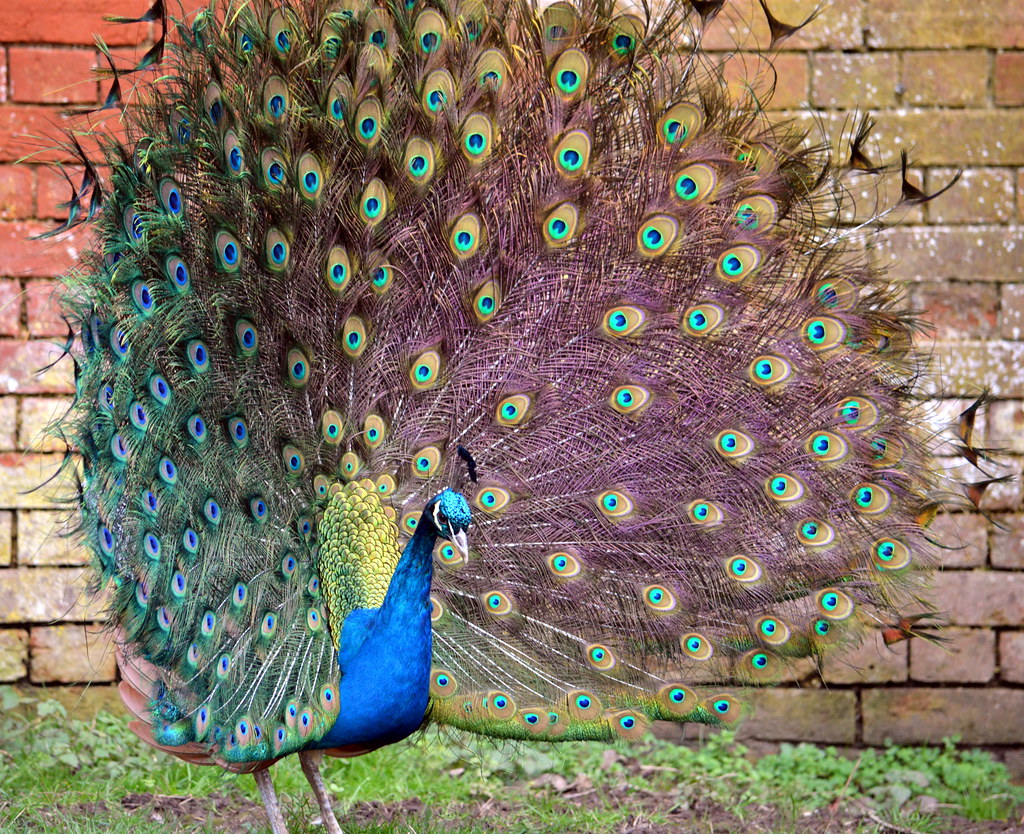
Male Indian peafowl are famous for their iridescent blue feathers and eyespot-covered tails that they spread out to attract females, while females sport more modest mottled-brown plumage with iridescent green throat feathers. Few birds possess iridescent feathers like those of the peacock, featuring photonic crystals that manipulate light so you see different shades depending on your viewing angle.
Males display dazzling fans of up to six feet of brilliant feathers that grow from their backs, wooing females by spreading spectacular displays of iridescent feathers with big glowing eyes. Peacocks have long symbolized immortality, royalty, and beauty across cultures, walking with regal grace where every movement becomes a slow dance of shimmering color. In Indian mythology, the peacock represents beauty, grace, and immortality, serving as the national bird of India and widely regarded as the most flamboyant bird on Earth.
Clownfish – The Ocean’s Beloved Orange Ambassadors
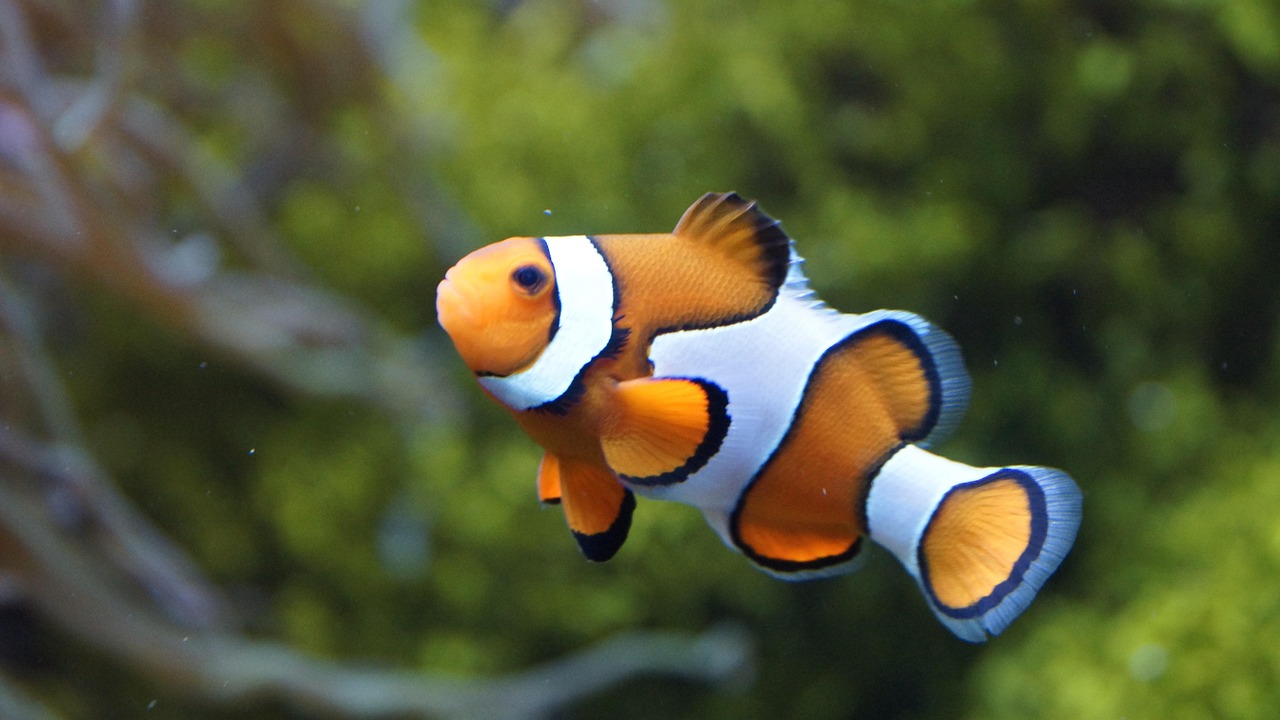
Clownfish display brilliant orange coloring with three bright white stripes outlined in black, with their fins often tipped in black as well. Their striking coloration serves as both camouflage and warning, helping them blend into waving anemone tentacles while signaling toxicity to predators. Made famous by the movie Finding Nemo, these small vibrant fish are not just charming on screen but fascinating in real life, living in close partnership with sea anemones.
Young clownfish select an anemone host in a symbiotic relationship where the anemone provides shelter while the fish eats parasites that could harm the anemone’s health. These family-oriented creatures live in small groups with a dominant female, breeding male, and several non-breeding males, with dedicated fathers protecting and caring for eggs.
Parrotfish – Living Rainbows of the Reef
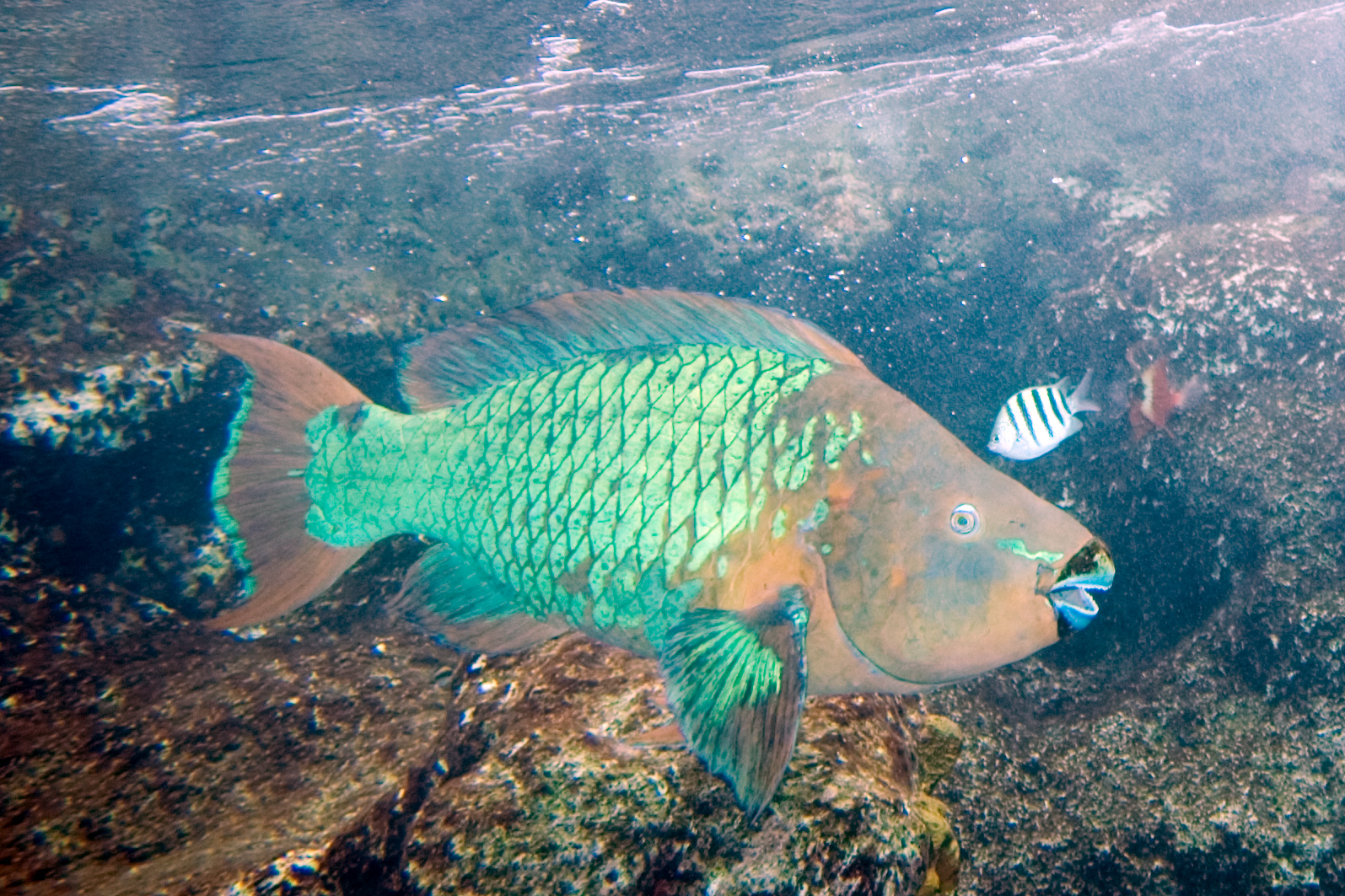
Parrotfish are known for their brightly colored bodies in green, blue, red, and yellow, equipped with distinctive beaks resembling a parrot’s that they use for crunching coral polyps. The rainbow parrotfish lives up to its name as a very colorful fish found in tropical Atlantic areas, often spotted while snorkeling or diving and remarkably long-lived at up to sixteen years.
Their parrot-like beaks help them bite off hard sections of coral, making them one of the most visible species in reef environments due to their bright colored patterns and shallow water habitat. These remarkable fish eat corals and excrete fine sandy waste, meaning much of the tropical sand beneath your feet was once part of a coral reef processed by parrotfish, making them nature’s living rainbows and sculptors of the sea floor.
Emperor Angelfish – Royalty of the Coral Kingdom
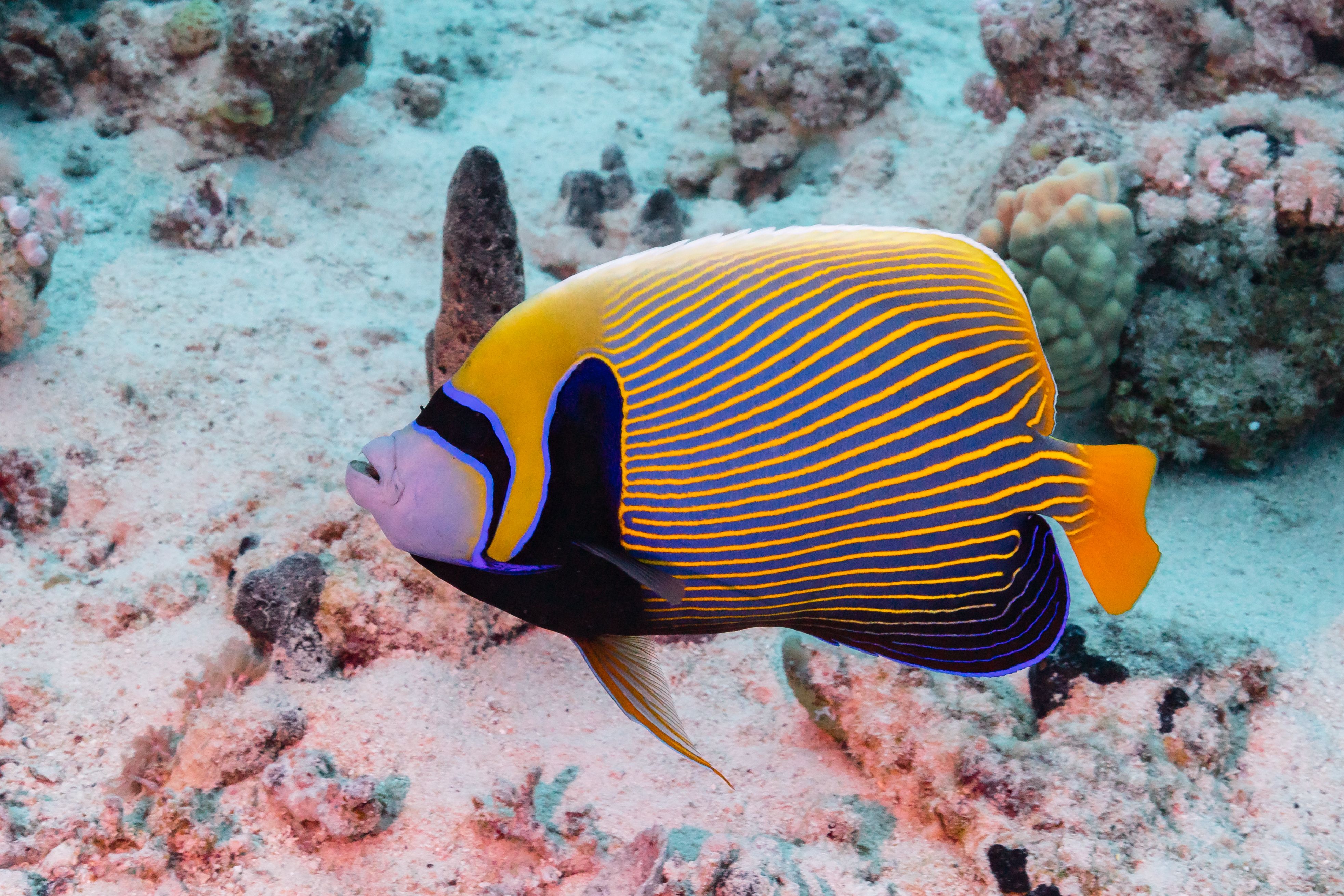
The stunningly beautiful Emperor angelfish inhabits reefs across the Pacific and Indian Oceans, with juveniles displaying electric blue and white rings while adults feature gorgeous yellow and blue stripes with black markings around the eyes. Their bold contrasting coloration features vibrant blue and yellow stripes with distinctive dark eye bands, undergoing fascinating transformations as juveniles display different patterns with dark blue bodies and vibrant blue and white rings.
Emperor angelfish are known for their commanding presence throughout Indo-Pacific coral reefs, with bold stripes that help break up their shape and confuse predators, moving with slow, deliberate confidence as if fully aware of their royal title. These fish display remarkable social behavior as haremic species, where a dominant male leads females, and if he disappears, the largest female undergoes a transformation to become the new leader.
Red Panda – The Forest’s Russet Jewel

The red panda ranks among the world’s cutest animals, featuring red and white markings on their faces that look like little masks, with hides displaying the same red color accented by black, white, and dark brown markings on their lower bodies. This charming animal resembles a mixture of a bear and red fox, with genetic analysis showing close relation to skunks, raccoons, and weasels, though sadly classified as endangered due to habitat destruction.
Red pandas usually live alone in the wild and in breeding pairs in captivity, with zoos breeding them because they’re endangered, though they don’t share much in common with black and white pandas beyond aspects of appearance and diet. These adorable creatures have even inspired popular culture, with Sanrio basing one of its female characters on the red panda and developing an animated series around her.
Violet-Backed Starling – Africa’s Shimmering Gem
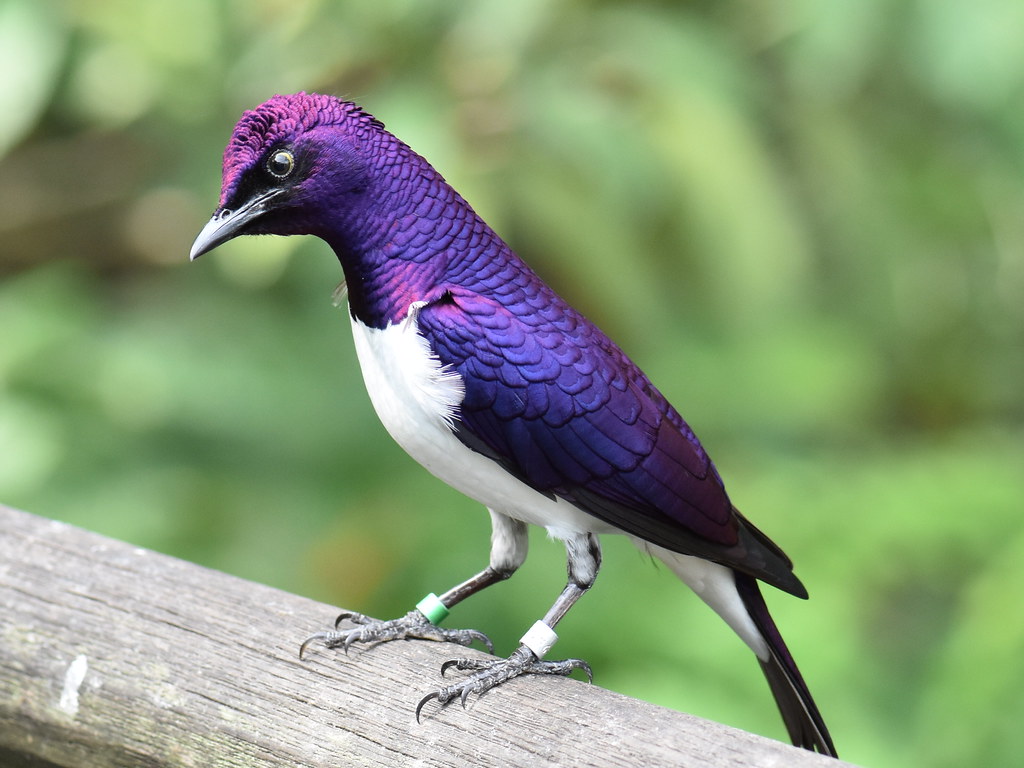
The violet-backed starling, also known as the plum starling, shimmers like polished amethyst with males glowing in deep violet iridescence over their backs and heads, contrasting with pure white underparts, with colors shifting from purple to indigo to metallic blue depending on light. Females display elegant brown and streaked patterns while the species often travels in pairs or small flocks, with feathers that reflect sunlight in complex ways, making them nearly luminous during flight and almost surreal in their beauty.
These remarkable birds inhabit sub-Saharan Africa, where their stunning appearance has made them favorites among birdwatchers and photographers. Their iridescent plumage changes dramatically throughout the day as light conditions shift, creating an ever-changing display of natural artistry. The contrast between the males’ brilliant violet backs and snow-white bellies creates one of nature’s most striking color combinations.
Flame Angelfish – The Ocean’s Living Ember
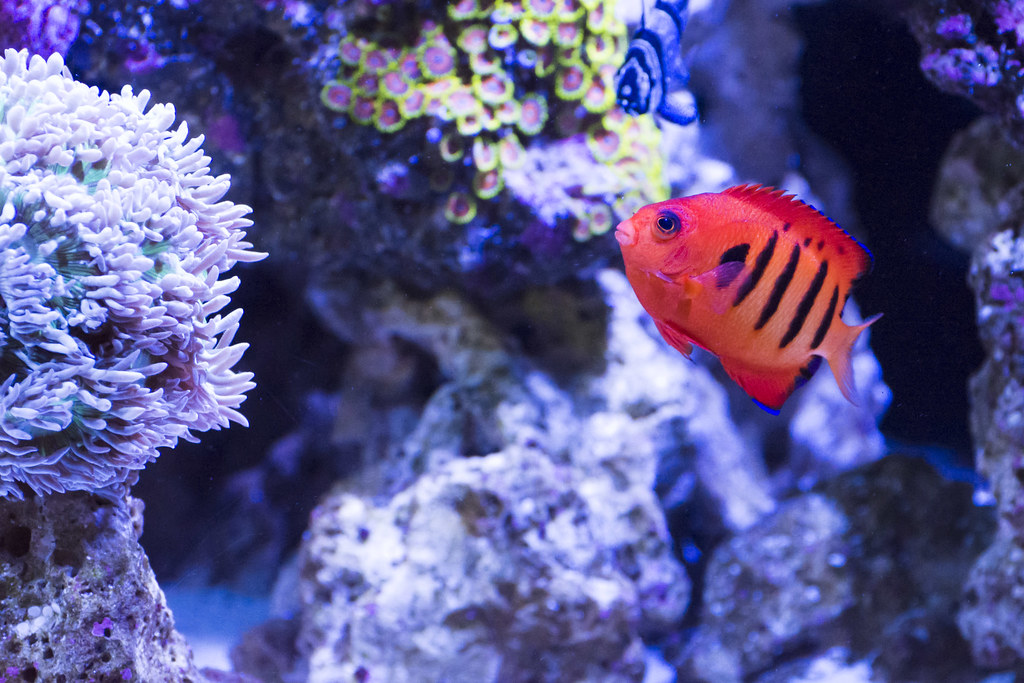
The flame angelfish burns bright beneath the waves, native to tropical Pacific waters particularly around Tahiti and the Cook Islands, glowing with radiant orange-red hues striped vertically with deep black bars that seem to ignite like living fire when sunlight pierces the water. This true visual marvel lights up any reef with its fiery red-orange body and bold vertical black bars, adding a lively spark to both natural and home aquariums with its dazzling colors and active personality.
Flame angelfish gained their name from their fiery appearance, with bright orange bodies featuring several vertical black bars and tail fins sporting violet-blue edgings, with males being larger and more colorful than females. Despite their bold appearance, they remain peaceful reef dwellers that feed on algae and small invertebrates, with males and females showing subtle color differences.
Clown Triggerfish – Nature’s Abstract Masterpiece
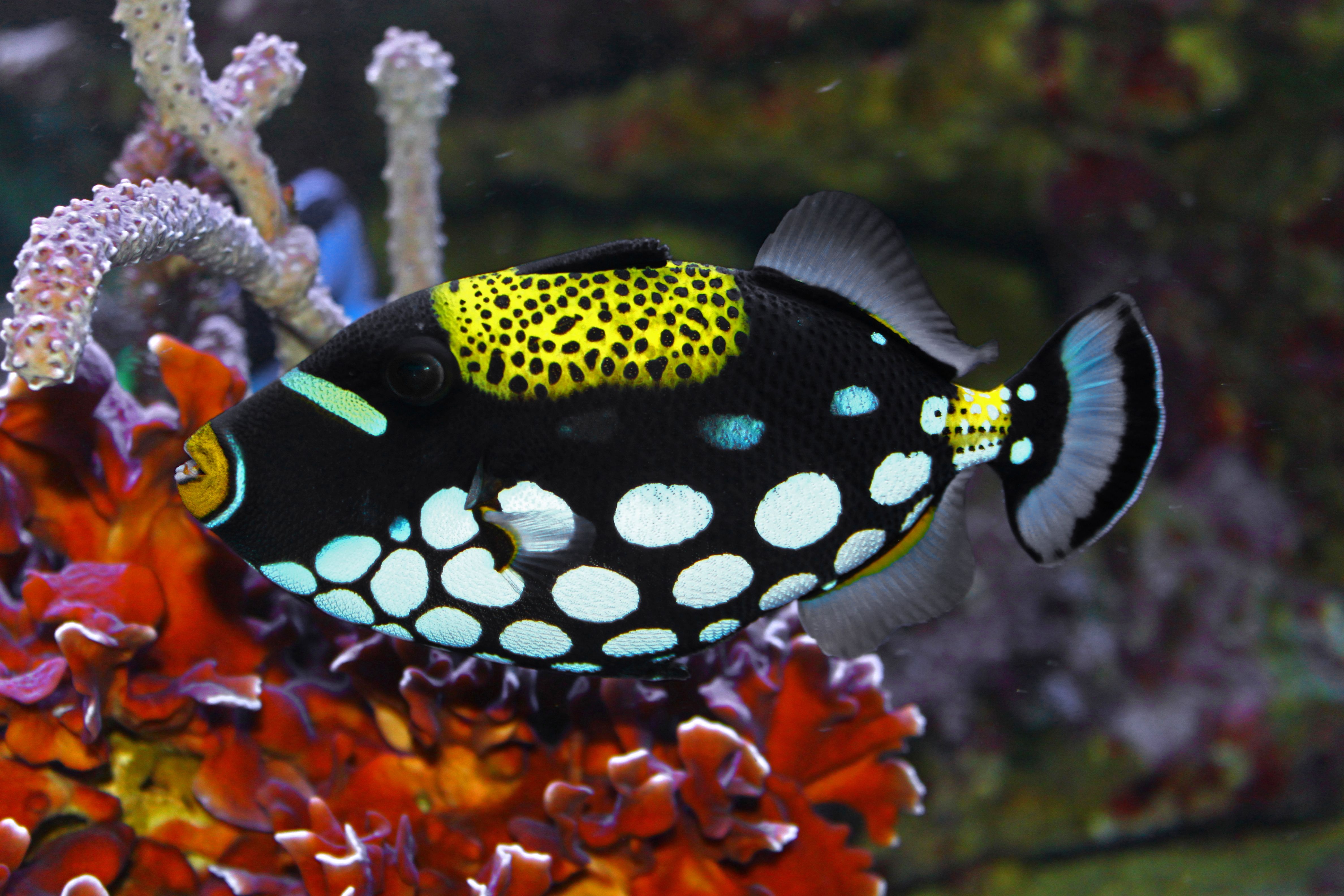
The clown triggerfish looks as if designed by a modern artist with bold contrasts, featuring a perfect mix of geometric patterns including white polka dots on a jet-black belly, yellow snout, and honeycomb-like upper half that radiates complexity. If created by artificial intelligence, it would feature half black and white coloring with white circles, cheetah-like skin, a white mask that doesn’t cover the eyes, a yellow and black fan-shaped tail, parrot-like yellow beak, and horn-like dorsal fin with super aggressive nature.
This impressive species grows to twenty inches in length and makes an awe-inspiring addition to large marine aquariums, with its dark brown base color adorned by large white spots and distinctive yellow mouth outlined in white. Found in tropical Indo-Pacific waters, triggerfish combine fierce beauty with fierce personality, being territorial and aggressive when protecting nesting sites, yet their intelligence makes them mesmerizing to watch.
Conclusion

These ten remarkable animals represent just a glimpse of the incredible diversity of colors that nature has painted across our planet. From the mandrill’s stunning facial displays to the clown triggerfish’s geometric artistry, each species has evolved its unique palette for survival, communication, and reproduction. Their vibrant appearances remind us that beauty in nature isn’t merely decorative – it serves vital biological functions that have been refined over millions of years of evolution.
The next time you encounter any of these colorful creatures, whether in documentaries, zoos, or their natural habitats, take a moment to appreciate the complex evolutionary processes that created such stunning displays. What do you think about these living masterpieces? Tell us in the comments.

Jan loves Wildlife and Animals and is one of the founders of Animals Around The Globe. He holds an MSc in Finance & Economics and is a passionate PADI Open Water Diver. His favorite animals are Mountain Gorillas, Tigers, and Great White Sharks. He lived in South Africa, Germany, the USA, Ireland, Italy, China, and Australia. Before AATG, Jan worked for Google, Axel Springer, BMW and others.

